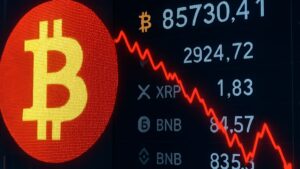Bitcoin network is considered the most secure decentralized network and for good reason – it has only one main design flaw: 51% attack. This essentially means that an attacker will need to accumulate at least 51% of the total hashing power on the network in order to successfully attack it. Now it seems, this will be a pipe dream for any potential attacker as the hash rate on Bitcoin keeps climbing by the day making the network almost virtually indestructible.
Hash rate is the measure of computing power contributed by all the machines connected to the network. It is hard to know for sure how many machines are present on the Bitcoin network but it is pretty easy to know the total power being delivered to the network in order to mine bitcoins.
Earlier this month, the network hash rate broke a previous record high by crossing the 85 EH/s. It was all smiles as several speculators are of the opinion that price trails the hash rate and so the price was expected to follow suit. Bitcoin bull Max Keiser is one of the best-known proponents of this theory and on August 8th he tweeted “Price follows hash rate and hash rate chart continues its 9 yr. bull market.” Well so far price has been stuck in the $9,800 – $10,800 range for more than four weeks now.
However, there is a general bullish sentiment in the market that has led the hash rate to keep rising and on Monday, that figure crossed the monolithic level of 100 Exahashes per second (EX/s). That is almost double where it was in October peak of 2018 which rose during the bear market to reach as high as 60 EX/s. the crypto winter that followed this period saw several miners switch off their machines to avoid mining in losses which caused the hash rate to plummet in December.
Now a rising hash rate may seem like a good thing but it also comes with a rising difficulty to mining. It is a feature in the Bitcoin software that aims to maintain the block generation times at an even 10 minutes per block. In order to ensure this happens while the amount of computing power varies, the mining difficulty readjusts every 2,016 blocks which are roughly every two weeks. The latest readjustment happened on September 14th in which the network also registered the highest figure ever recorded.
Increasing difficulty also means a reduction in profitability and as expected the profitability of miners has taken a hit over the last few months. Data reported by Bitinfocharts shows that the mining profitability has more than halved since its yearly peak in late June. This could, however, be corrected with the launch of the latest Bitmain miners scheduled to ship in November this year. These miners are theoretically the most efficient miners in the market which should mean an improvement in profitability (at least in the short term).











